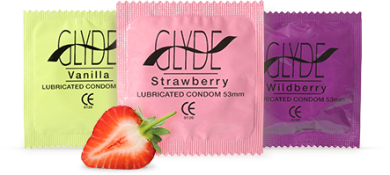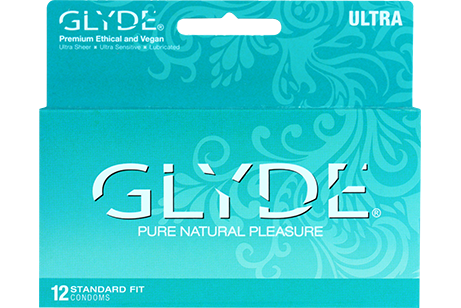 A recent study by researchers at Stanford Medical School reveals that a large portion of young women are irresponsible in bed, meaning they ain’t protecting themselves. The year-long study collected data from 1,194 sexually active females aged 15 to 24 who visited Planned Parenthood clinics and were beginning contraceptive pills, patches, injections, or vaginal rings for the first time. At the beginning of the study, only 36 percent of participants consistently used the “dual method” (relying on both hormonal contraceptives and the condom), which meant that STI and STD protection was compromised. Getting pregnant seems to be the only risk to care about.
A recent study by researchers at Stanford Medical School reveals that a large portion of young women are irresponsible in bed, meaning they ain’t protecting themselves. The year-long study collected data from 1,194 sexually active females aged 15 to 24 who visited Planned Parenthood clinics and were beginning contraceptive pills, patches, injections, or vaginal rings for the first time. At the beginning of the study, only 36 percent of participants consistently used the “dual method” (relying on both hormonal contraceptives and the condom), which meant that STI and STD protection was compromised. Getting pregnant seems to be the only risk to care about.
Surprised? To be honest, I wasn’t either as I know many friends whose first time using birth control was when they entered a relationship with someone they trust, and that trust included believing (hopefully, with medical proof) that neither person carried STIs.
However, it gets worse: The study found that over 50 percent of young women did not resume condom use after they discontinued hormonal contraceptives. That’s right, NO protection!
Less Youth are Using Condoms
Why is this happening? And how can prevention improve? According to Rachel Goldstein M.D., lead author of the study, the most influential factor of condom usage is the partner’s attitude toward condoms. When a woman did not know how her partner felt about condoms or knew that he felt they were “very important”, she was more likely to be a dual method user than when her partner thought condoms were “not at all important”. The researchers speculate that power imbalances within the relationship impact the woman’s ability to negotiate condom use. “It appears that her partner’s feelings may be more important than her perceived risk of a sexually transmitted infection or her own beliefs about dual method use,” said Goldstein. This is an important point of concern. There are many factors, including levels of mutual respect, emotional maturity, and self-esteem that need to be considered when counseling youth about healthy sex (Scarleteen offers great advice on negotiating condom use). Of course, the study concludes that more counseling is needed to accompany hormonal contraceptive treatment that emphasizes the risks of STIs and STDs.
However, I think this is only one piece in the very complicated puzzle of sexual relations. Plus, the research does not address why young women are not resuming condom use after discontinuing hormonal medication.
In fact, condoms are not very popular among young adults in general. According to the American Academy of Pediatrics and the Henry J. Kaiser Family Foundation, the rate of STIs in people 15-24 years old is exceptionally high. Two-thirds of all individuals who become infected with STIs in the United States are younger than 25 years old! The reason for this is because young people simply are not using condoms and other barriers consistently or correctly to protect themselves and their partners.
Condoms Miss the Limelight
Now, most teens in North America have been exposed to sex ed and know why condoms exist, but this is obviously not the only means to ensuring healthy sex lives. Indeed, sex pedagogy in North America is riddled with censorship (that’s a whole other post), and health counseling should accompany hormonal contraceptive use. Both these solutions, however, overlook a larger social problem. The social stigma which has developed around STIs and diseases has produced negative attitudes and ignorance towards safer sex. It’s fair to say that this negativity permeates in our popular culture.
Condoms and other safer sex practices have acquired an unsexy reputation from their very absence in romantic and steamy and sex positive representations. Pornography, films, romance novels, or how-to articles in popular magazines rarely represent the condom and how it can actually increase sensuality, not dull it. And this is something that needs to change because it limits our knowledge, attitude and imagination about what healthy sex can be.
This is not to say that viewers of media are passive recipients who are easily influenced by what is on TV. But media can be interpreted as a cultural artifact that reflects beliefs, attitudes, prejudices of the times. It is a matter of what sells, and unfortunately, the mainstream only works to reinforce the notion that safer sex is a chore.
One Solution: Safer Sex Porn!
There are some who have sought to exert control over the representation of safer sex through alternative media. One honorable example is the 1990 video short, Current Flow, by Jean Carlomusto starring Annie Sprinkle and Joy Brown. This explicit video was made in response to Cosmopolitan magazine publishing a piece which erroneously claimed that virtually no females could contract HIV. The short is basically about a woman (Annie Sprinkle) masturbating on the couch with her vibrator. Suddenly her vibrator stops and we see a woman enter the room with a towel in one hand and a power cord in the other (not many battery-operated vibrators back then). The woman seductively crawls over Annie and rolls out from her towel dental dams, latex gloves, condoms and lube for the dildo. And the climax begins.
But this is not just any girl-on-girl porn, it also emphasizes “showing how”. For example, a close-up of Annie Sprinkle getting eaten-out shows how to use a dental dam. Another shot shows Joy Brown washing the dildo before it is her turn to use it on Annie. As Carlomusto writes,
“…in order to educate lesbians about safer sex we have to establish what it is. Saying, ‘use a dental dam’ is not the same as saying ‘use a condom’, since many women don’t know what a dental dam is” (1992: 82).
Current Flow is the first of it’s kind. Sexy and safe lesbian porn made by and for lesbians. It was made at a particular time during the HIV/AIDS crisis when the Centers for Disease Control refused to investigate data on woman-to-woman transmission of HIV. It was also a time when mass media and public health bureaucracies refused to produce explicit sex education or represent gay and lesbian sexuality. While the information today is made more available and inclusive of a wider public, we still do not see safe sex represented as often as we see sex in the media.
Safer sex should be not be limited to public health messages or HIV/AIDS activism. What would be powerful is normalization of safer sex in everyday media. Imagine music videos- the soft porn of daytime television- including condoms in a sexy, bootylicious way…
Dull Feeling in Bed Begins with Dull Attitude
You might think that the reason there are few representations of positive condoms in popular culture is simply because condoms are genuinely unfun and decrease pleasure. You might think that it is for this reason that younger people are using condoms less. I would argue that this belief is grounded more in attitude than it is in actual reality. Let me explain.
Some studies, such as “Sexual Pleasure and Condom Use” by Randolph et. al. (2007), have found that those who report sex with a condom as less pleasurable tend to be people who have not used condoms in a while or who don’t use them at all. They found that more men than women tend to believe condom use is less pleasurable even without actual experience. It is beliefs that influence experience with condoms and whether one wants to use them. It is true that many people reported that unprotected sex feels better than protected sex. Overall, people who are familiar with using condoms tend to report greater pleasure with protected sex than those who are likely to go without protection. As Heather Corinna at Scarleteen writes, “The more you use them, the more they feel good, and it’s people who don’t use them at all that tend to complain about them most.”
In other words, it is the attitude that one has towards condoms that greatly affects satisfaction. People who use condoms often do not express a decrease in overall pleasure because they learn what condoms suit them best and what ways they are most comfortable using them.
Know Your Condom
Which brings me to my next point. Part of the process of popularizing condoms is to increase understanding of the different types and ways of using them. Another study by Michael Reece and Debra Herbenick (2012) found that many people do not know how to use condoms properly and what can increase pleasure. For example, putting a drop of lube inside the condom before rolling it on can improve application and increase sensitivity. Also, the condom can be put on in sexy and tantalizing ways by you or your partner that make it a part of sex- not an interruption to it. Check out our post for some sexy tips on condom use.
Pediatrics and sex educators should know condoms too. Reece and Herbenick suggests that prevention providers can play a valuable role in alleviating negative perceptions of condoms by recommending different condoms made for specific needs. For example, for those men who feel condoms are too tight, a practitioner may recommend condoms which are designed with a more bulbous head or looser fit. The point is that there are hundreds of thousands of condom types out there and there needs to be more access and understating of choice and care.
If it’s true that sexual pleasure with a condom is all in the attitude than it is all the more important that there be representations of safe sex in pop media. How powerful would it be if Jake Gyllenhaal whipped out a condom during the famous sex scene in Broke Back Mountain!
What do you think? Would safer sex in the media help increase positive attitudes towards safe practices? What do you think should be done to get more youth practicing safer sex?
Source cited: Jean Carlomusto & Gregg Bordowitz (1992).“Do It! Safe Sex Porn for Girls and Boys Comes of Age.” A Leap in the Dark: AIDS, Arts and Contemporary Cultures. Allan Klusacek & Ken Morrison, eds. Montreal: Vehicule Press.
This site contains affiliate links. When you purchase products through these links, we may earn a commission at no additional cost to you. These commissions help support our work in providing comprehensive sexual health information. We carefully select our affiliate partners and only recommend products we believe will be valuable to our readers. While we may receive compensation for purchases made through these links, this does not influence our reviews or recommendations. All opinions expressed are our own.




 A recent
A recent